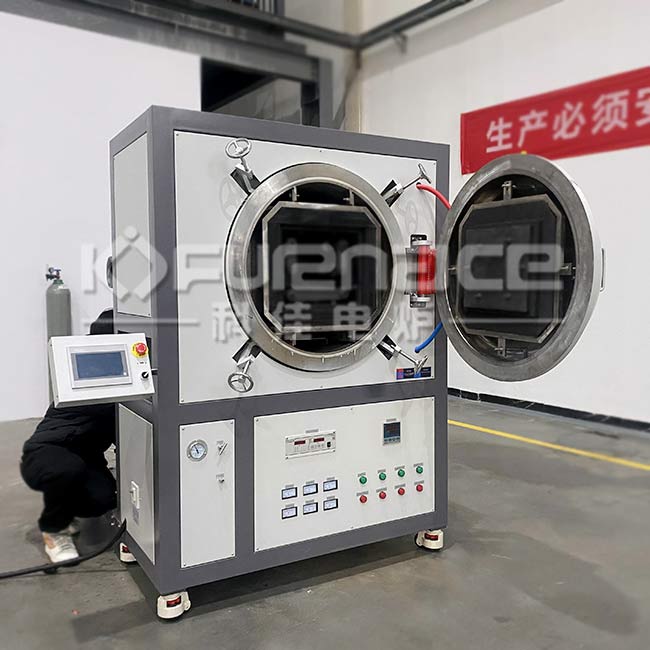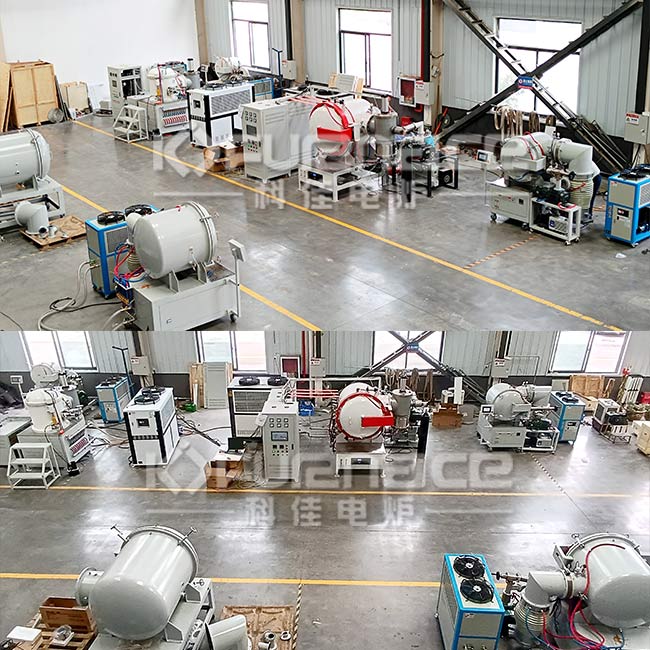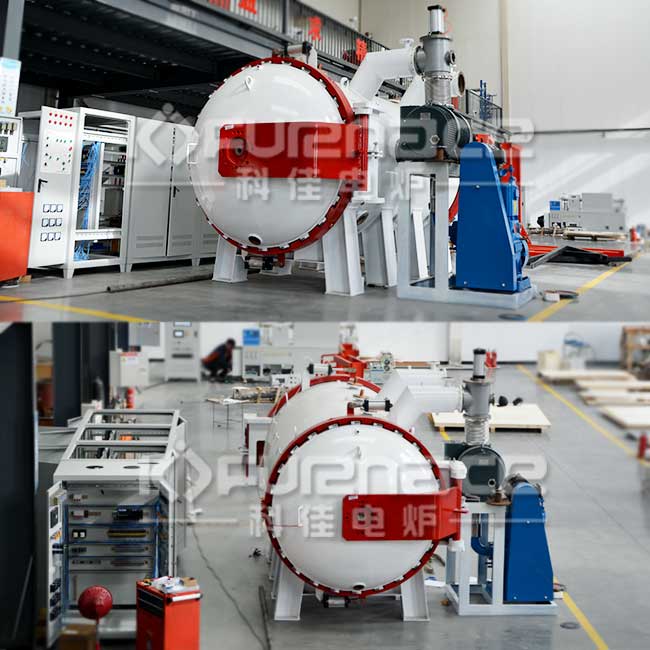Application of metal 3D printing vacuum furnace in additive manufacturing?
1. What are the materials used in metal 3D printing?
At Kejia Furnace Co., Ltd., we have long been committed to researching and promoting additive manufacturing technology, including metal 3D printing application materials and surface treatment methods. Our 3D printer heat treatment vacuum furnace has First-class craftsmanship, long service life and excellent temperature uniformity.Kejia company have more than 20 years of industry experience, more than 1000+ furnace types, and many cases. Below, we will give you a detailed introduction to the common metal 3D printing Applied Materials and our heat treatment vacuum furnaces are used in additive manufacturing for metal 3D printing applications.
Metal 3D printing is an important technology for additive manufacturing and is suitable for manufacturing complex geometries and structures. In metal 3D printing, 10 commonly used materials include stainless steel, aluminum alloy, titanium alloy, nickel alloy, mold steel, and high-temperature alloy. The properties and application areas of these materials are as follows:
Stainless steel: Stainless steel is a metal material with high corrosion resistance and high strength. It is often used in the manufacturing of medical devices, automobile parts and other fields. Through metal 3D printing, stainless steel products with complex structures can be manufactured, improving manufacturing efficiency and material utilization.
Aluminum alloy: Aluminum alloy is a lightweight, high-strength metal material commonly used to manufacture structural parts in aerospace, automobiles and other fields. Through metal 3D printing, high-precision, lightweight aluminum alloy products can be produced to improve structural performance and energy-saving effects.
Titanium alloy: Titanium alloy is a metal material with high strength and corrosion resistance. It is often used to manufacture high-end structural parts in aerospace, marine engineering and other fields. Through metal 3D printing, titanium alloy products with complex structures can be produced, improving manufacturing efficiency and material utilization.
Nickel alloy: Nickel alloy is a metal material with high strength and good corrosion resistance. It is often used in the manufacture of high-temperature and high-pressure components and other fields. Through metal 3D printing, nickel alloy products with complex structures can be produced, improving manufacturing efficiency and material utilization.
Mold steel: Mold steel is a metal material used to make various molds and is required to have high hardness, wear resistance and corrosion resistance. Through metal 3D printing, mold steel products with complex structures can be produced, improving manufacturing efficiency and material utilization.
High-temperature alloy: High-temperature alloy is a kind of metal material used in manufacturing high-temperature environments. It is required to have excellent high-temperature resistance and corrosion resistance. Through metal 3D printing, high-temperature alloy products with complex structures can be manufactured, improving manufacturing efficiency and material utilization.
Copper alloy: Copper alloy is a metal material with good thermal and electrical conductivity and is often used in the manufacture of electrical connectors and other fields. Through metal 3D printing, copper alloy products with complex structures can be produced, improving manufacturing efficiency and material utilization.
Magnesium alloy: Magnesium alloy is a lightweight, high-strength metal material that is often used to manufacture structural parts in aerospace, automobiles and other fields. Through metal 3D printing, high-precision, lightweight magnesium alloy products can be produced to improve structural performance and energy-saving effects.
Zirconium alloy: Zirconium alloy is a metal material with high strength and corrosion resistance. It is often used to manufacture high-end structural parts in the nuclear industry and other fields. Through metal 3D printing, zirconium alloy products with complex structures can be produced, improving manufacturing efficiency and material utilization.
Tungsten alloy: Tungsten alloy is a metal material with high density, high strength and good corrosion resistance. It is often used to manufacture high-end structural parts in military equipment and other fields. Through metal 3D printing, tungsten alloy products with complex structures can be manufactured, improving manufacturing efficiency and material utilization.
2. Application of heat treatment vacuum furnace in additive manufacturing metal 3D printing
Heat treatment vacuum furnaces play an important role in additive manufacturing metal 3D printing. Additive manufacturing metal 3D printing is a technology that melts metal powder layer by layer. Since the metal will be affected by high temperatures during the printing process, subsequent heat treatment is required to adjust its structure and performance.
The application of heat treatment vacuum furnaces in additive manufacturing metal 3D printing is mainly reflected in the following aspects:
Removing residual stress: Metal 3D printed parts will generate residual stress during the forming process, affecting their stability and performance. Heat treatment vacuum furnace can remove residual stress and improve the stability and reliability of parts through appropriate heat treatment processes, such as annealing or tempering.
Adjusting the organizational structure: The organizational structure of metal 3D printed parts is usually uneven, and heat treatment is required to adjust the organizational structure and improve its uniformity and stability. The heat treatment vacuum furnace can provide precise temperature control and atmosphere control to ensure the stability and reliability of the heat treatment effect.
Improve mechanical properties: After heat treatment of metal 3D printed parts, their mechanical properties such as hardness, strength and toughness can be significantly improved. The heat treatment vacuum furnace can select the appropriate heat treatment process according to the specific requirements of the parts to optimize performance.
Improve surface quality: The heat treatment vacuum furnace can also be used to improve the surface quality of metal 3D printed parts, such as removing oxide scales, improving surface finish, etc., to enhance the overall quality and appearance of the parts.
In general, the application of heat treatment vacuum furnaces in additive manufacturing metal 3D printing can effectively improve the quality and performance of parts, expand their application areas, and provide important support for the development of metal additive manufacturing technology.
Heat treatment vacuum furnaces have the following advantages in additive manufacturing metal 3D printing:
Precise temperature control: The heat treatment vacuum furnace can achieve precise temperature control. According to different metal materials and heat treatment process requirements, the temperature in the furnace can be accurately controlled to ensure the stability and reliability of the heat treatment effect.
Excellent atmosphere control: The vacuum furnace can perform heat treatment in an oxygen-free or low-oxygen environment, which avoids the impact of oxidation on metal parts and is beneficial to maintaining the smoothness of the metal surface and removing oxide scale.
Uniform heating effect: The heat treatment vacuum furnace can achieve uniform heating of metal parts, avoid problems such as deformation and cracks caused by excessive temperature gradients, and ensure the dimensional stability of the parts.
Reliable heat treatment effect: The heat treatment vacuum furnace can provide stable and reliable heat treatment effect. According to different metal materials and process requirements, the appropriate heat treatment process can be selected to improve the performance and stability of the parts.
Energy saving and environmental protection: The vacuum furnace does not require air or oxygen when working, which reduces energy consumption and environmental pollution, and meets the requirements of energy saving and environmental protection.
Kejia 3D printer heat treatment vacuum furnace has the advantages of precise temperature control, excellent atmosphere control, uniform heating, and reliable heat treatment effect in additive manufacturing metal 3D printing. It can improve the quality and performance of metal parts and promote the development and application of additive manufacturing technology. Get A Custom Solution For Your Research. Fast Response. Welcome Talk To An Expert Today!



![]() Send E-mail:web@kejiafurnace.com
Send E-mail:web@kejiafurnace.com![]() Wechat/Whatsapp: +86 18037178440
Wechat/Whatsapp: +86 18037178440![]() Company Tell: +(86)18037178440
Company Tell: +(86)18037178440

 E-mail:web@kejiafurnace.com
E-mail:web@kejiafurnace.com
 Tell:+(86) 18037178440
Tell:+(86) 18037178440
 Whatapp:+(86) 180-3717-8440
Whatapp:+(86) 180-3717-8440
 Address:Room 1505, Building 9, No. 26 Dongqing Street, Zhengzhou High-tech Industrial Development Zone
Address:Room 1505, Building 9, No. 26 Dongqing Street, Zhengzhou High-tech Industrial Development Zone


 Website navigation
Website navigation
 Position:
Position:





